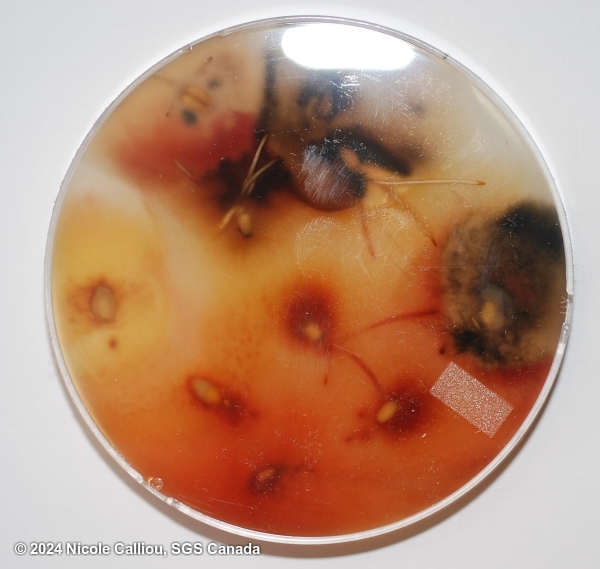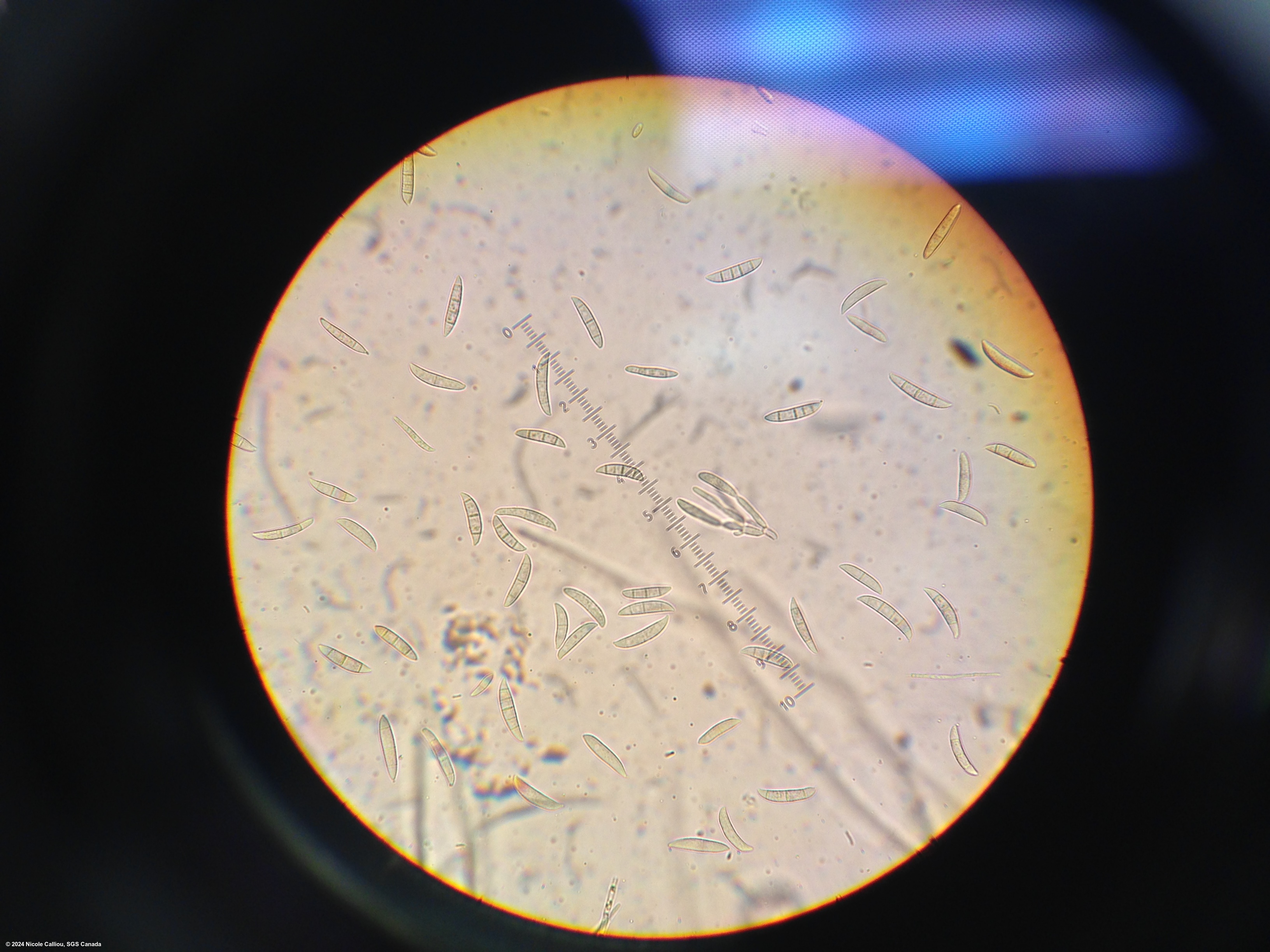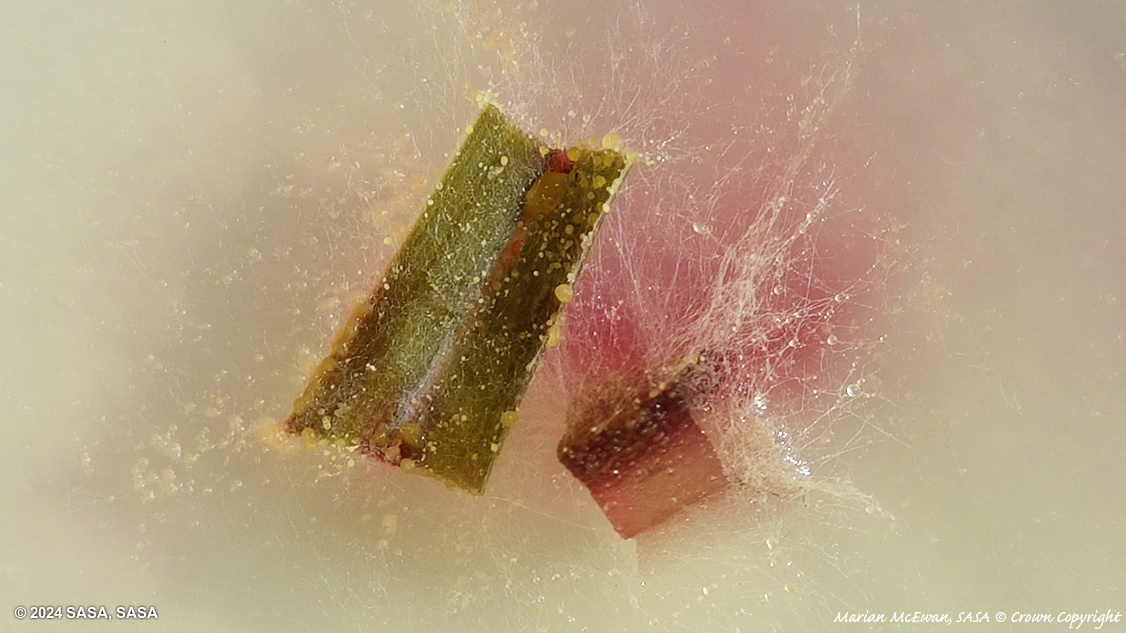Fusarium culmorum
Overview
|
Scientific name
|
Fusarium culmorum |
|
Genus
|
Fusarium |
|
EPPO code
|
FUSACU |
|
Common name
|
Cereal foot rot and head blight |
|
Synonyms
|
Fusisporium culmorum |
Description
On PDA, growth is rapid, with dense aerial mycelium, generally white but often yellow to tan on the base. The undersurface is orange to carmine red. Orange to red brown sporodochia appear readily.
On malt agar, the mycelium is short, pink to carmine red. Sporodochia form on older cultures and are orange to red brown in colour.
Conidiophores: Unbranched and branched monophialides.
Macroconidia are stout, distinctly septate (typically 3-4 septate), thick walled, and have straight to curved ventral and dorsal surfaces. The basal cells is usually distinctly round and can occasionally be foot-shaped (rare), to slightly notched. Macroconidia are usually uniform in shape and size. Microconidia are absent.
Chlamydospores generally form abundantly and quickly, they may occur singly, in chains, or in clumps. Typical growth time is 3-5 weeks on CLA for formation.
From ISTA's Common Laboratory Seed Health Testing Methods for Detecting Fungi:
The fungus produces abundant dull orange to light brown, slimy pionnotes, variable in shape and size, often covering the whole seed.






